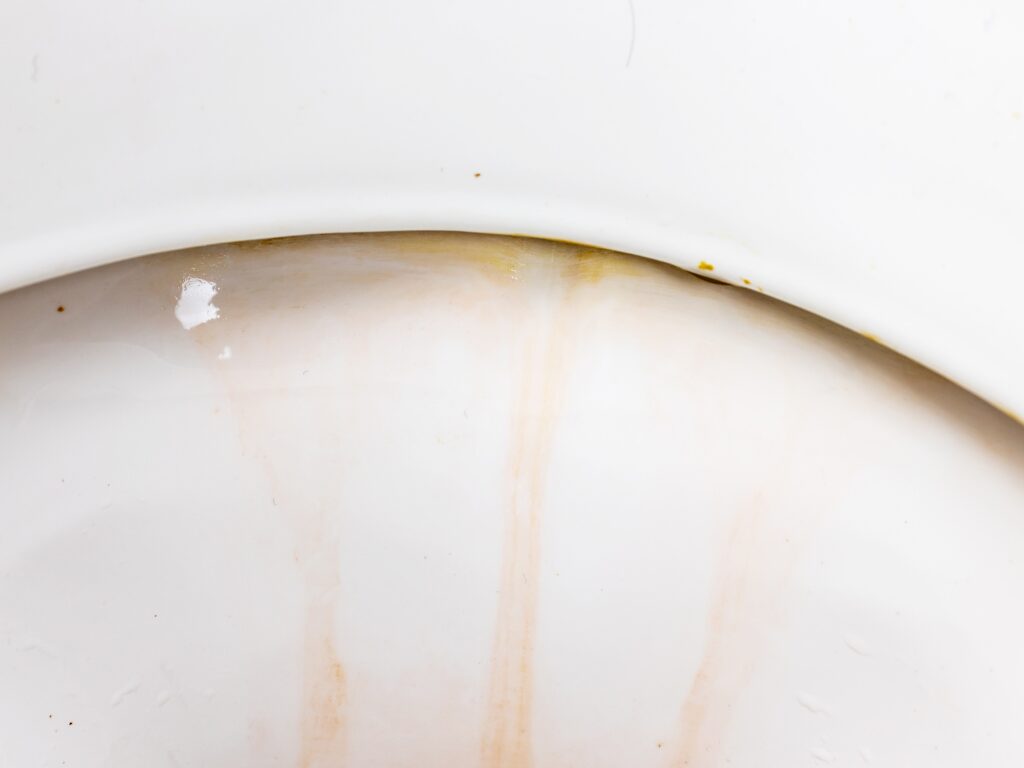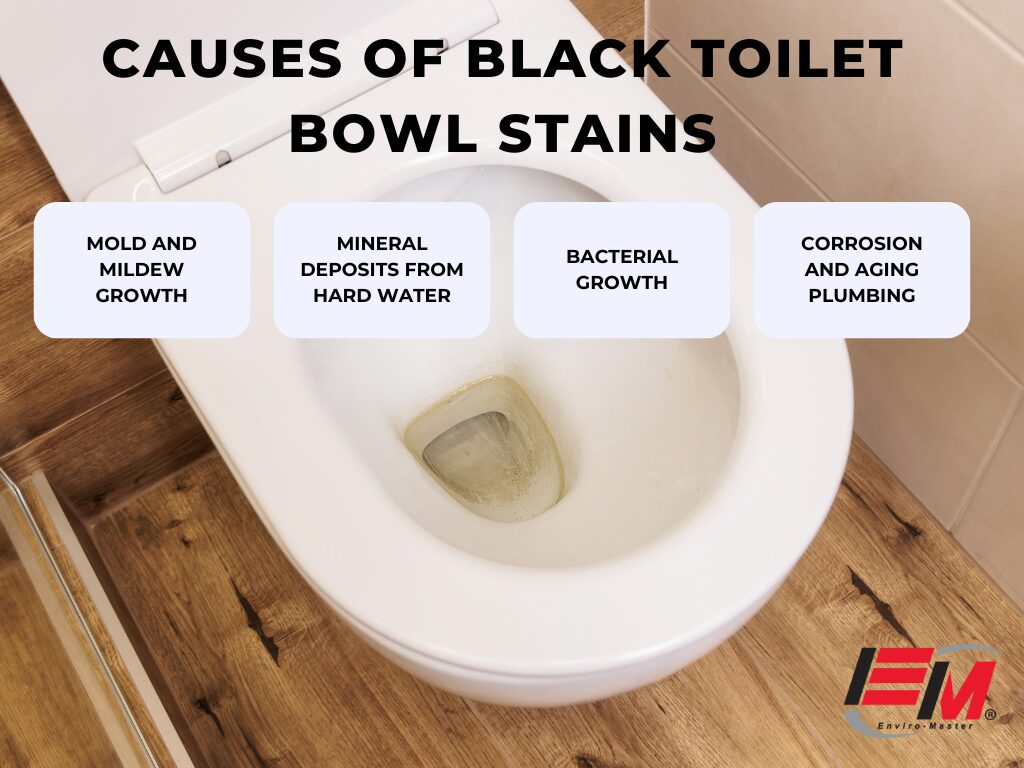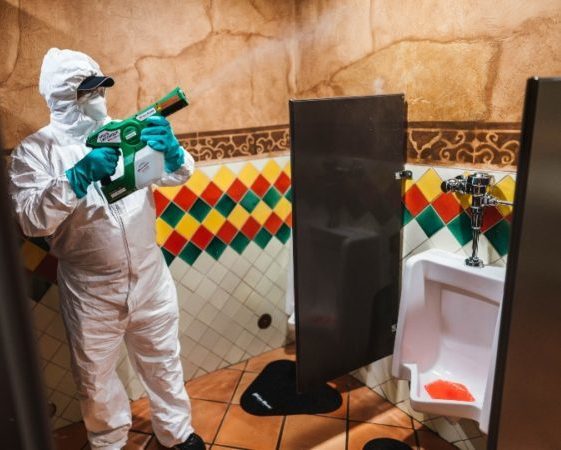Toilets are not the centerpiece of our homes or businesses, but they still need meticulous cleanliness. Black stains in the toilet bowl, though common, are not just a minor nuisance; they indicate potential hygiene issues that need immediate attention. These stains can be caused by a variety of factors, including minerals from hard water, bacterial growth, or mold spores. Understanding these causes is key to effectively removing the stains and preventing them from recurring. Keeping your toilet free of black stains is not only vital for hygiene but also reflects your commitment to maintaining a clean and healthy environment. Regularly addressing these issues helps ensure that your restrooms remain sanitary and presentable, contributing to the overall impression of cleanliness in your space.
Understanding Different Types of Toilet Stains
When tackling the challenge of keeping a toilet clean, it’s important to recognize that not all of these unsightly stains are created equal. Each type of stain has its own unique causes and requires specific cleaning methods. Let’s take a closer look at the most common types of toilet rings and stains and how they differ.
Black Stains
Black stains in the toilet bowl are often the result of mold or mildew growth, which thrives in moist environments. Another common cause is manganese, a mineral that leaves a dark residue when water with high manganese content sits in the bowl for a period. These stains might look alarming, but with the right approach, they can be effectively removed.
Rust-Colored or Brown Stains
Rust-colored or reddish-brown stains typically occur due to high iron content in the water. When iron particles are exposed to air, they form a compound known as iron oxide and leave a reddish-brown residue in the toilet bowl. These stains are particularly common in areas with well water or aged plumbing systems.
Hard Water Stains
Hard water stains are caused by minerals like calcium and magnesium in the water supply. These minerals deposit over time and form a chalky white or gray residue that can harden and become difficult to remove. They often appear just under the water line and around the upper rim of the bowl.
Limescale Deposits
Similar to hard water stains, limescale is a hard, crusty deposit that forms from calcium carbonate in water. It typically accumulates in areas with persistent water contact and can become quite thick over time. Limescale is notably difficult to clean because it adheres strongly to the surface.
By identifying the type of stain you are dealing with, you can choose the most effective cleaning agents and techniques to tackle the problem. This understanding not only helps in achieving better cleaning results but also in preventing future occurrences by addressing the underlying causes.
Causes of Black Toilet Bowl Stains
Stubborn black stains in toilet bowls are not just a cleaning nuisance; they indicate specific conditions within your toilet that need to be addressed. Understanding the underlying causes of these stains can help you effectively remove them and prevent their recurrence. Here, we explore the most common sources of black stains in toilets.
Mold and Mildew Growth
One of the primary culprits behind black stains is the growth of mold and mildew. Black mold and mildew thrive in moist, dark environments, making the toilet tank or bowl an ideal breeding ground. Toilet mold can start to form when there’s a consistent presence of moisture coupled with poor ventilation, often leading to black or dark green stains that can spread if not cleaned properly.
Mineral Deposits from Hard Water
Hard water contains high levels of minerals such as magnesium and calcium, but when it comes to black stains, iron and manganese are the usual suspects. These minerals can have a chemical reaction with the oxygen in the air to form black or dark brown deposits in the toilet bowl. Over time, these deposits can accumulate and harden, making them difficult to remove.
Bacterial Growth
Certain types of bacteria, such as Serratia marcescens, are known for causing dark, reddish-black stains. This bacteria feeds on mineral deposits and the organic matter found in water, flourishing in the damp environment of a toilet bowl. Regular cleaning often keeps this bacterial growth at bay, but neglect can lead to significant staining.
Corrosion and Aging Plumbing
Old or corroded plumbing can also contribute to black stain formation. As metal components degrade over time, they can release minerals into the toilet bowl, which then oxidize and leave dark residues. This may be particularly common in an older home or building with outdated an septic system.
At-Home Fixes for Black Toilet Stains
Removing black stains from your toilet doesn’t always require professional help. There are several effective at-home methods you can use to tackle these stubborn spots and restore your toilet’s cleanliness. Here’s a guide to some of the most reliable cleaning techniques:
Regular Use of Hydrogen Peroxide
Hydrogen peroxide is a powerful oxidizing agent that can break down and bleach organic stains, making it excellent for combating mold and mildew. Simply pour a cup of hydrogen peroxide into the toilet bowl and let it sit for about 30 minutes. Afterward, scrub the bowl with a toilet brush and flush. This method not only cleans but also disinfects.
White Vinegar and Baking Soda
For mineral deposits and bacteria-induced stains, a combination of vinegar and baking soda can be highly effective. Start by pouring a cup of vinegar into the toilet bowl and sprinkling baking soda over it. Let the mixture fizz for 10 to 15 minutes before scrubbing with a toilet brush. The natural acidic action of vinegar coupled with the abrasive nature of baking soda acts as a natural stain remover without harsh chemicals.
Borax Paste
Borax has strong cleaning properties that can tackle tough toilet stains. Make a paste by mixing the borax powder with water and applying it directly to the stains. Allow it to sit for 15 to 20 minutes, then scrub in a circular motion with a toilet brush or pumice stone for extra stubborn stains. Flush the toilet to rinse away the residue.
Lemon Juice and Salt
Lemon juice is another natural acid that can help remove black stains, especially those caused by mildew. The citric acid in lemon juice breaks down the stain, while salt acts as a gentle abrasive. Apply a mixture of lemon juice and salt to the stain, let it sit for several minutes, then scrub and flush. This not only cleans but also leaves a fresh, clean scent.
Pumice Stone for Hard Mineral Deposits
For hard mineral deposits, a pumice stone can be an effective tool. Wet the pumice stone and gently rub it on the stain. The abrasive surface of the pumice will grind away the mineral buildup without damaging the porcelain, as long as it is used wet and with gentle pressure.
Enhance Your Restroom Cleanliness with Enviro-Master
Maintaining a clean toilet is essential not just for aesthetics but for the overall health and hygiene of any environment. While at-home cleaning products can effectively address occasional black stains and general upkeep, persistent and tough stains might require professional intervention to ensure deep cleaning and long-term solutions.
Enviro-Master specializes in comprehensive restroom and hygiene services designed to tackle even the most challenging cleaning tasks. Our certified Health and Safety Technicians use advanced cleaning techniques, including electrostatic spraying of hospital-grade germicides, to eliminate bacteria and prevent the buildup of harmful pathogens.
Our services extend beyond just cleaning; they also involve preventive measures to ensure that restrooms remain in pristine condition. We work with your existing janitorial services to provide an added layer of protection, making sure that every aspect of restroom hygiene is covered. From regular deep cleaning to addressing specific hygiene needs, Enviro-Master is equipped to handle restrooms of any size and in various industries.
We understand that each business has unique needs, which is why we offer tailored solutions that fit your specific requirements and budget. Investing in professional cleaning services not only saves time and effort in maintenance but also enhances the safety and satisfaction of your employees and customers.
Don’t let restroom maintenance be a lingering concern. Contact Enviro-Master today to find out how we can help keep your facilities clean, safe, and welcoming. Visit our website or use our pricing calculator to explore service options and schedule a consultation. With Enviro-Master, you can trust that your restrooms are in expert hands, leaving you free to focus on what matters most in your business.





